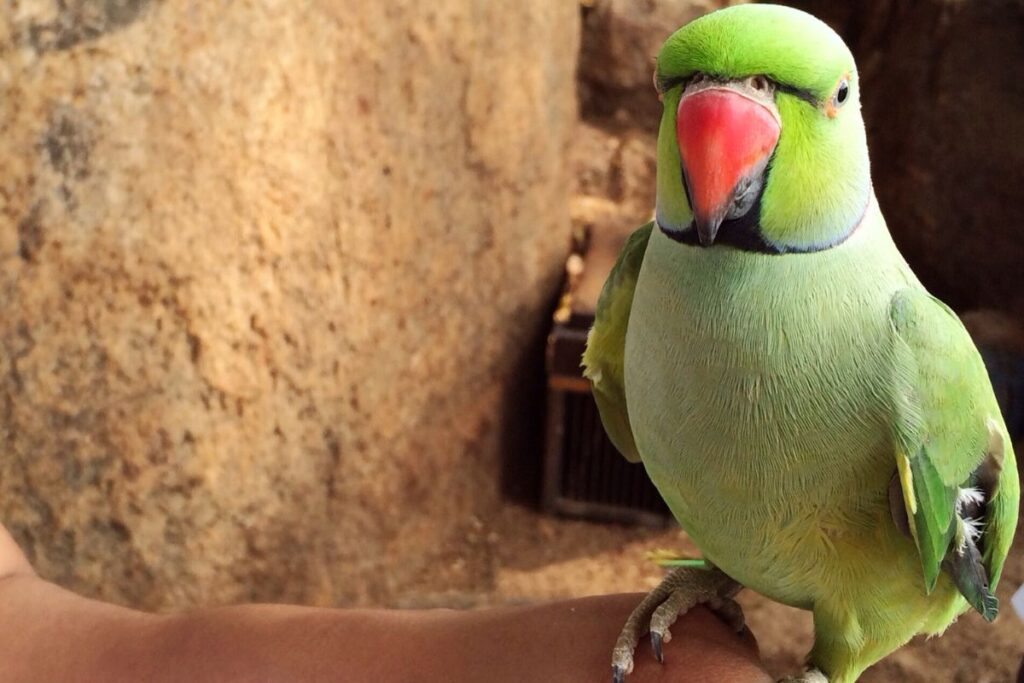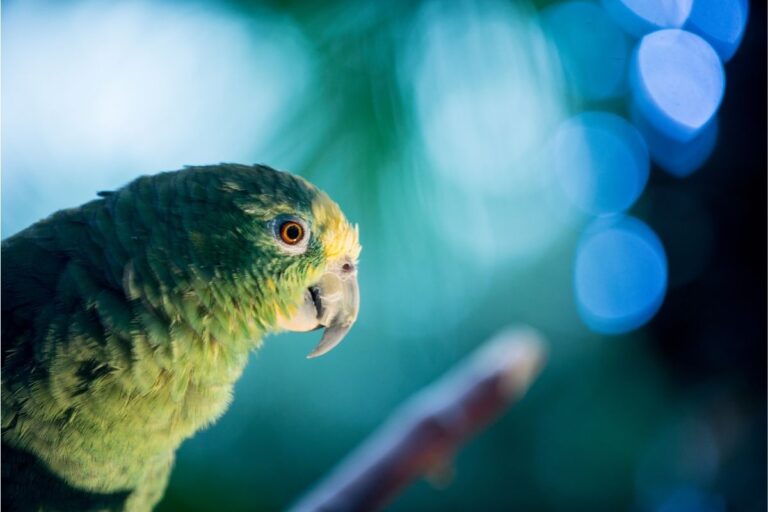How Fast Do Parakeets Wings Grow Back
Disclosure: The opinions expressed in this post are my own. This post may also contain affiliate links, which means that I will receive a commission if you decide to purchase through my links, at no additional cost to you. As an Amazon Associate, I earn from qualifying purchases.
Ever wonder how fast a parakeet’s wings grow back after clipping? Well, it turns out that the speed of wing regrowth depends on several different factors including the type of parakeet, their diet and stress levels, and environmental conditions like the temperature.
We’ll be going through everything you need to know about feather growth, so you can get an idea of how long it takes for your pet’s wings to grow back.
Are Parakeet’s Wings Able to Grow Back?
A healthy parakeet should be able to grow their wings back over time. However, the rate and amount of growth will vary depending on the species of bird, as well as the individual bird such as its age and overall health.
Generally speaking, younger birds tend to regrow their wing feathers quicker than older parakeets since they tend to have higher levels of hormones responsible for tissue regeneration. Additionally, a healthy bird that receives proper nutrition and enough exercise will likely regrow its feathers faster than one that doesn’t because its tissue repair processes operate more efficiently.
However, if your parakeet has lost feathers due to injury or illness, the regrowth process may take longer. In some cases, feathers may not grow back at all if the condition is serious enough.
How Long Does It Take For A Parakeet’s Clipped Wings To Grow Back?
Not all feather growth occurs at the same rate for parakeets. There are different types of feathers in birds. Primary flight feathers will generally regrow slower than secondary feathers. The period of time required for these primary flight feathers to regrow after being clipped can range from 4 to 8 weeks, and sometimes up to 12 weeks depending on the individual bird and its particular molting cycle.
The reason why some birds take longer than others when re-growing their clipped feathers has to do with several factors related to the moulting cycle itself such as diet, stress levels, temperature, hormones, genetics and overall health condition.
What Is Molting And How Does It Affect Feather Growth?
Molting is the process of shedding old feathers and growing new ones, and it’s a natural part of a parakeet’s life cycle. It usually happens one to two times each year. During this period of time, parakeets may be less active than usual as they focus on losing their old feathers and growing back the new ones.
The molting process is quite fascinating: a parakeet’s body stops providing nutrients to its feathers which causes them to become brittle and weak; then, these brittle feathers are gradually shed. As the feather falls out from its root socket, a brand new feather begins to grow in its place. However, this process can take some time for completion-,as long as eight weeks.
Do Secondary Feathers Grow Back After Clipping?
Yes, secondary feathers typically grow back on their own within 4 to 6 weeks. While the primary flight feathers grow from the body to build up muscle strength for flying, the secondary wing feathers are mainly used for balance and stability. These new secondary wing feathers help to give the parakeet its graceful flight style, providing better airflow while they fly around the house or in their cage.
What Causes Feathers Not To Grow Back?
The growth of parakeet feathers is influenced by many factors, such as nutrition, age, genetics, and disease. Here are some common reasons why.
Poor Nutrition

Poor nutrition is one of the main causes of feathers not growing back in parakeets. Just like humans, if a parakeet does not get the proper vitamins and minerals from their diet, the growth of healthy feathers will be drastically reduced.
Parakeets need a well-rounded diet to ensure their wings grow back properly. Ideally they should be eating a combination of seeds, pellets, fruits, and vegetables with calcium-rich treats thrown in once in awhile. All of these foods provide essential vitamins and minerals including zinc, copper, vitamin A, and B-vitamins that are essential for feather health.
Age
As parakeets grow older, they may experience changes in their behavior and physical health that can cause feathers to fall out or prevent them from regrowing.
The moulting process normally occurs each year as birds shed old feathers and regrow new ones, but when parakeets reach a certain age, their bodies may be unable to complete the cycle as quickly. This can lead to imbalances in hormones which can affect the growth rate of new feathers.
Genetics
Genetics are an important factor when it comes to feather growth in all bird species, not just parakeets. Depending on their genetic makeup, some birds may have feathers that grow back quicker than others.
Genetics can also influence the quality of a bird’s feathers. Some birds are predisposed to having duller feathers or feathers that are more prone to breakage. So the overall condition of a bird’s feathers is heavily influenced by its genetics – which directly affects how quickly they may be able to regrow them.
Diseases
In some instances, parakeet’s feathers may not grow back due to disease. That’s why it’s important to monitor your pet’s health and make sure it gets the right nutrition and care. Common diseases that can cause feather loss in parakeets include polyomavirus, a herpesvirus, and psittacine beak and feather disease.
To make sure your pet stays healthy and its feathers continue to regrow properly, take it for regular check-ups with a vet and provide the proper care such as good nutrition and preventative treatments like vaccinations when needed.
How Can I Encourage Feather Growth After Clipping?
There are a few things you can do to help encourage healthy and speedy feather growth.
Nutritious Food
First, give your parakeet plenty of nutritional supplementation in the form of vitamin-enhanced fruit and vegetables. Eating nutritious food helps promote strong bones, muscle growth, and healthy feather growth.
Give Them Some Sunlight

Second, make sure that your parakeet gets enough natural sunlight each day. Sunlight helps parakeets to produce vitamin D , which is essential for healthy feather growth.
Keep Them Active
Finally, be sure to keep your parakeet active by providing bird toys or letting it out of its cage to move about for short periods of time. Keeping active will allow them to get plenty of exercise while relieving stress, which helps stimulate the production of hormones that are necessary for feather growth.
What Can I Do If My Parakeet’s Feathers Do Not Grow Back?
If your parakeet’s feathers do not grow back, it may be due to a medical problem or injury. You should take your pet to the veterinarian for an evaluation. The vet may be able to diagnose the problem and provide treatment.
Is Clipping A Parakeet’s Wings Permanent?

No, clipping a parakeet’s wings is usually not permanent. Thankfully, parakeets have the ability to grow back their clipped feathers in a relatively short amount of time.
It’s important to note that you should only clip a parakeet’s wings if absolutely necessary. Clipping birds’ wings can cause them stress and injury if done wrong, so it should always be done with great caution. When making the decision whether or not to clip your parakeet’s wings, you’ll want to thoroughly consider their age and overall health before proceeding. Additionally, make sure you understand how to safely perform the procedure before attempting it yourself.
Does Clipping A Parakeet’s Wing Affect Flight?
When a bird’s wings are clipped, it effectively reduces the length of their wings and reduces the power and stability of their flight. In some cases, this might make flying altogether impossible until their wings are fully grown out.
This is why many parakeet owners choose to clip their wings, so that their little feathered friends will have lesser exposure to dangerous elements such as ceiling fans, mirrors and windows.
While it is true that cutting the flight feathers of their wings stops them from flying immediately, this does not mean they can never fly again. The structure and shape of the feather shafts remain intact even when clipped, meaning that over time these feathers may grow back to enable flight once more.
Should I Clip a Parakeet’s Wings Myself?
Clipping a parakeet’s wings isn’t something to be taken lightly. In most cases, it’s best to leave it up to an experienced professional due to the complexity and delicacy of the procedure. Different places have different costs when it comes to wing clipping. A pair of scissors may not seem like a complicated tool, however an untrained person can easily cause injury and possibly even death if performed improperly such as cutting the blood feathers. Plus, if your bird experiences too much stress during the process, it could lead to severe feather plucking and other issues down the road.
When handled correctly by a trained expert, wing clipping does not interfere with the growth of healthy feathers, as long as proper care is made in determining how much should be clipped off. Some birds take longer than others before their wings are able to fully grow back in depending on the size/health of your parakeet when they were initially clipped.
Final Words
We can see that parakeets can regrow lost feathers fairly quickly. The process may take anywhere from a few weeks to a few months. However, it is important to remember that clipping a parakeet’s wings should only be done with the help of an experienced professional if you are not trained to do it yourself. With proper care and nutrition, your feathered friend’s wings will eventually be back to full functioning as it was before.









